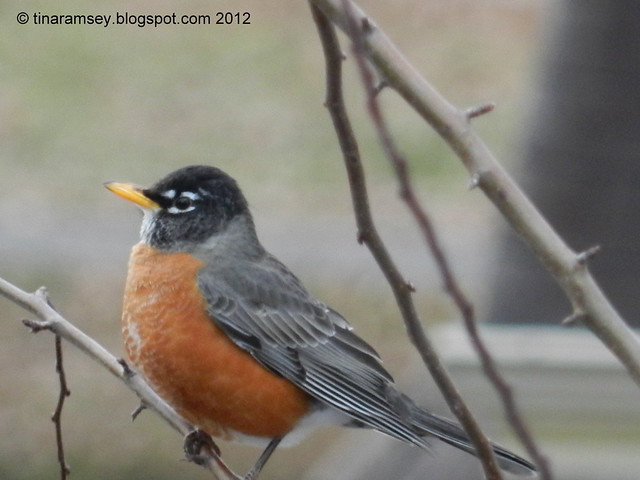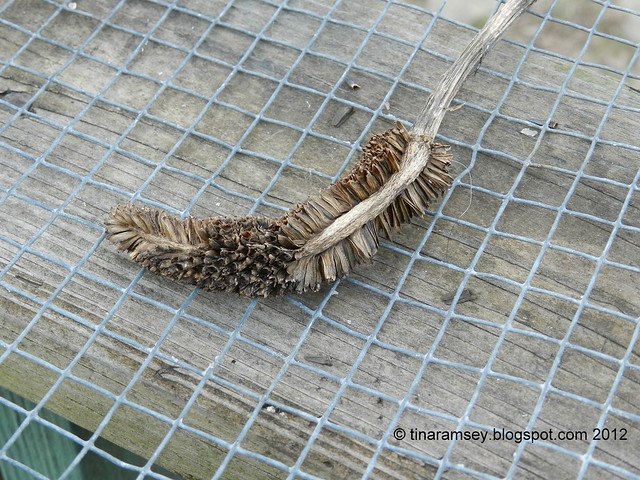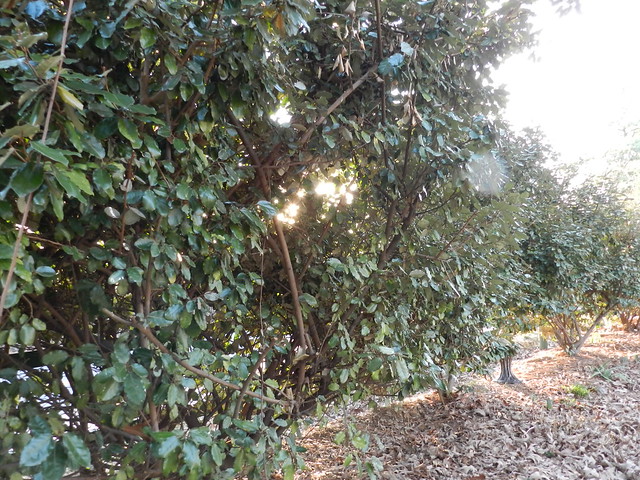
Joe Cocker's song I get by with a little help from my friends always plays in my mind when I think of the little birds outside on cold, frigid nights during the dark days of winter. (Psst-scroll down and press play on Joe Cocker's audio while you read this post) I wonder to myself how something that weighs barely what a handful of coins weighs can survive the cold nights. Birds that do not migrate are a wonderful treat for those of us in areas where the weather can get quite cold but how do they survive brutal winters and can 'friends' help them to get by? I like to think so.
I know the birds will certainly survive the cold of winter without a little help from their friends (bird lovers around the world) but I sure like to think we make their life a bit easier when it comes right down to it. Feeding the birds in the winter and providing them locations where they can forage and seek shelter is but a small task we must do in order to enjoy the company of birds in the winter. They ask so little yet give so much in return.

Outside of my computer window I can enjoy the antics of all sorts of birds. Robins, mockingbirds, titmice, bluebirds, blue jays, and cardinals all partake in the bounty the old crabapple tree provides. This tree is really not so old. When I came back from Iraq in 2003 it was one of my first purchases for my dream garden. It was in this year when I retired from the Army that I really began gardening and a tree between my home and my neighbors was needed. A visit to a local nursery found just the right one. This tree started out about seven feet tall with a good three foot rootball. I persuaded the nursery owner (who is local) to come to the house and use her auger to dig the hole and help me plant the tree. Since she had to come to the house to deliver the tree anyhow it was an easy matter to get her to dig the hole (for an extra $20-a steal indeed). Now, nearly nine years later the tree has more than doubled in size and provides a reliable crop of delicious crabapples each year for the birds. The birds enjoy picking and eating those crabapples usually all the way until the spring when the tree blooms again. This year however the crabapples are nearly gone. It seems that every other year I get a good bloom and this year the bloom was not as adequate therefore there is less fruit. Or maybe it is the fact more and more birds come to eat? I am not sure but I do like to think those crabapples make the birds as happy as the birds make me when I can watch them daily.
I took the pictures of the robin from my upstairs computer room with my new camera. My point and shoot Nikon Coolpix P500 has an excellent zoom to 36x. It took some pretty good photos but perhaps I should've used a tripod. It is mighty hard to hold a camera still when it zooms in so much! Do you see the crabapple in the second picture? The robin's quest on this day.

Another small way I've tried to help the birds this year is to provide them with more natural foods. The cost of sunflower seeds has grown so exorbitantly that I simply cannot justify spending the money for them. Never fear, Tiger Gardens is a certified wildlife habitat so there is plenty of natural food around. One good one to grow is rudbeckia. The seedhead above is actually from Rudbeckia maxima, aka Giant Coneflower. The heads are quite long and wow on the seeds. I cut the seedheads and after collecting seeds for a seed swap I saved a few to go on my deck. I've never seen any birds pecking at this seedhead but it is clear birds like it!

Natural food is a great enticer to the birds in my garden and birds come from far and near to partake. I cannot walk outside without hearing the refrain from the little wren who lives by the compost pile, or the blue jays who fight over the water in the heated birdbaths. Then the darkness comes and the finches, sparrows, and siskins join in the refrain with their constant twittering with one another as they jockey for the best positions in the silverberry hedge. When the night falls in Tiger Gardens I can literally sit on my porch (weather permitting) and watch birds flock to the dense evergreen silverberry hedge along the front of my property. This hedge was put in place to block out the state highway but its benefits have far exceeded that one purpose. At first I did not really understand about evergreen hedges and just where the birds went at night to roost. I need wonder no more. They are all in this silverberry hedge (Elaeagnus pungens) or in the arborvitae hedge out back. The dense foliage and the fact that the birds bunch together must surely help the tiny birds hold in their heat and make it through the night. This hedge and the birds who roost there never fail to amaze me. They don't care about the highway to the east of them less than 10 feet away and if I walk along the hedge they will sharply scold me but they never fly away. What a joy to have them close and hopefully snug at night.

One last pointer about helping out our feathered friends is to leave a good mulch along the ground. I mulch my gardens with natural materials-materials that are always on hand here in Tiger Gardens thanks to a full canopy of mostly hardwood trees. I find that as I walk through the gardens birds are everywhere in the mulch. They hop and chirp and peck and pick at the mulch. I suspect they are finding seeds, overwintering insects, and maybe even a worm or two in the garden. One caution about mulch though!! Not only does the mulch provide help to our friend the birds but it provides a nice and cozy blanket for all the voles in the garden. The voles are very active during this mild winter. I have found they have about demolished my kerria among other plants and shrubs. I make it a point to walk through and stomp down the garden near shrubs on a weekly basis and sometimes I wonder if mulch is worth it, then I tell myself, yes it is. The benefits of mulch far outweigh the drawbacks so I try to deal with the voles on another level. Just be aware of them when gardening for birds. Some might say when you are a wildlife habitat you must garden for the voles too. I totally disagree because I would soon not have a garden if I let the pests be, and voles are definitely pests.
So, now that we know how to help our friends in the garden I am wondering if the birds like Joe Cocker's song as much as I do and thought you might enjoy hearing it. This is a remake of the Beatles song of the same name from Sgt Pepper's Lonely Hearts Club album-both are excellent songs but I have only provided you with Joe Cocker's song today....
in the garden.....
What is your favorite natural food for feeding the birds in the winter?
Happy Martin Luther King's Day!
MLK day was declared a Federal holiday in 1983 by then President Ronald Reagan. It took awhile for all the states to officially recognize MLK Day as a holiday. I remember being a soldier here at Fort Campbell in 1984 and MLK was not a recognized holiday in Tennessee. An interesting note is that MLK was not observed in all fifty states until the year 2000. We've come a long way in our country....
in the garden....
Words and Photos Property of In the Garden Blog Team, In the Garden
I don;t know if you have ever been to the part of England called Devon, but there are hedgerows everywhere. Beautiful of course, but like your hedges they provide a wonderful habitat for birds and other critters. Just found you and will keep checking your blog. Michele
ReplyDeleteWonderful photos! "A Little Help" is one of the great standards. I think it applies to so many aspects of life.
ReplyDeleteTina,
ReplyDeleteMy favorite natural food for the birds in the garden is coneflower seedheads, the gold finches love them! Was thinking about the birds first thing this morning as all the water here was frozen including the pond. Now there is some open water since it is in the 40s now.
Michele, I don't think I've been to Devon but have surely heard of those famous hedgerows in Europe. They are so beneficial for all! And welcome to In the Garden!
ReplyDeletePatricia, I agree wholeheartedly!
Randy, Those are such wonderful plants for feeding the birds. Glad the water is thawing out for the birds.
It is really amazing how something so small can live thru all the cold. The colder it is, the more food they need as it gives them energy and the energy helps to keep them warm. As I type this I have a blue jay at my feeder and he is screeching his head off and my cockatiels are screeching back at him. They are amazing aminals for sure but I think right now I need some earplugs!
ReplyDeleteWonderful tips for helping to take care of our feathered friends this winter, Tina. One reason I leave so much of my garden, including the rudbeckia and coneflowers, standing over the winter is for the birds. This year, though, I haven't seen nearly the variety of species I normally do in the winter. I think the mild winter thus far has had something to do with it.
ReplyDeleteThanks for mentioning your new Nikon--I've made up my mind to buy one this week! And I love the Joe Cocker version of this song.
Yes, we have come a long way in this country; Dr. King's message is as relevant today as it was years ago.
You know Tina it is funny--I leave all kinds of natural seedy things for the birds, and they don't seem to be interested. I do find that they enjoy the mulch as much as you described. Of course, the cedar waxwings will love all the berries of anything! Love to watch them move through and clear a bush of its berries!
ReplyDeleteMom, What a joy to hear the birds on a daily basis and so close to you too!
ReplyDeleteRose, I hope you like your new camera as much as like mine. The only trouble I have is with pictures at dusk. The automatic setting doesn't work all that well for me and I don't know how to do the settings. You might be able to figure it out though.
Linda, You've got some well trained birds to eat at the feeder so well I think!
Nice plug for MLK day---we have come a long way. I have E. pungens. I love it but always worry that it will show the invasive tendencies of its autumn olive and Russian olive relatives. I haven't noticed this, have you? You might like to read Winter World: The Ingenuity of animal Survival by Bernd Heinrich--absolutely fascinating.
ReplyDeleteTina I am so wanting to see robins in my yard...many birds over winter but not robins...I have lots of natural food for them and am adding a crabapple...I let the trees naturally mulch and the birds just love the bugs found under the leaf litter...Happy MLK Day!!
ReplyDeleteHappy Martian Luther King day to you Tina. A heated bird bath would never work where I live as soon as the birds got out of it they would freeze instantly. :)
ReplyDeleteI've never seen a robin that looks like that before. What a beautiful bird! I'm doing a wee giveaway over at my blog x
ReplyDeleteI've been lax this winter in feeding the birds. I have a whole bag of seed in the garage but empty feeders. I think next year I may go more extreme with the sunflowers - maybe I can harvest them and save them for the winter when the birds could use a hand! or handout!
ReplyDeleteI always think of the Wonder Years when I hear that song.
ReplyDeleteA heated bird bath is a good idea. I think that would be a good investment for my bird hobby, as I like to call it.
Hope you are doing well!
Rosey
Love the song. I got a birdfeeder for my birthday -- so it is in a location where I can watch from my chair. Great fun. My natural food sources for the birds are all my flower seeds, leave the seedheads up for a long time. I planted three (two female one male) Winterberry. This fall I planted two tiny crabapples, hoping they provide a lot of great food in the future for the birds and other little critters.
ReplyDeleteI get tickled every time I see the little sparrows eating out of my bucket {that is full} of scraps to go into the garden. They did nest in my hanging plant by the back door till the plant died a couple yrs ago. But there is plenty of hedges that they can get in.
ReplyDeleteI took the bird feeders down when the grackles showed up last summer. With them gone, I noticed how the squirrels have stop digging in the planters. They now seem to stay in the woods for food. So the feeders remain gone. I do however keep suet up year round. Many birds that used the feeders now endulge in suet. I do miss the birds at the feeders entertaining me but I still see plenty of birds, I just have to look for them in more then one place. I am so happy the squirrels have gone away as I really did have an issue with them. Like over a dozen in one place at any given time! No more....
ReplyDeleteGreat pics with your new camera! Love that song no matter who sings it and Happy MLK day to you too. I had no idea the year was 1983! We have come a long way.....
Lucky birds to have your garden as a natural rest stop. In the winter, the birds enjoy nibbling on the red berries of the burning bush. I know it's an obnoxious invasive but it's contained by our driveway.
ReplyDeleteI love your bird posts. In winter I often see sparrows, crows, great tits, and sometimes white-eyes in my neighborhood. Your robins are lovely! And thank you for the music!! I enjoyed it a lot.
ReplyDeleteI never knew birds ate so much until I set out a birdfeeder. In one day it was halfway gone! I have cut back and now I let them pick around in my garden for worms, and hopefully hornworms!
ReplyDeleteA lot of businesses don't observe the holiday. I knew ton's of people who had to work but then again the whole country cannot shut down. Only those with government jobs, banks and post offices of course get all the good holidays off.
ReplyDeleteGreat post with lots of helpful info! I am all about natural habitat. Love helping the birds "help themselves" and I'm having to adjust to the differences here from my SE yards!
ReplyDeleteI left most of my perennials up this year for the birds and they have picked just about everything clean. The apples at the top of the tree were mostly carried away by squirrels :( They have hidden them everywhere. Our Anna's hummingbirds overwinter here and I've given them extra sugar in the feeders to help give them more energy.
ReplyDeleteNot only is it nice to feed the wintering birds, but it's fun to watch them too.